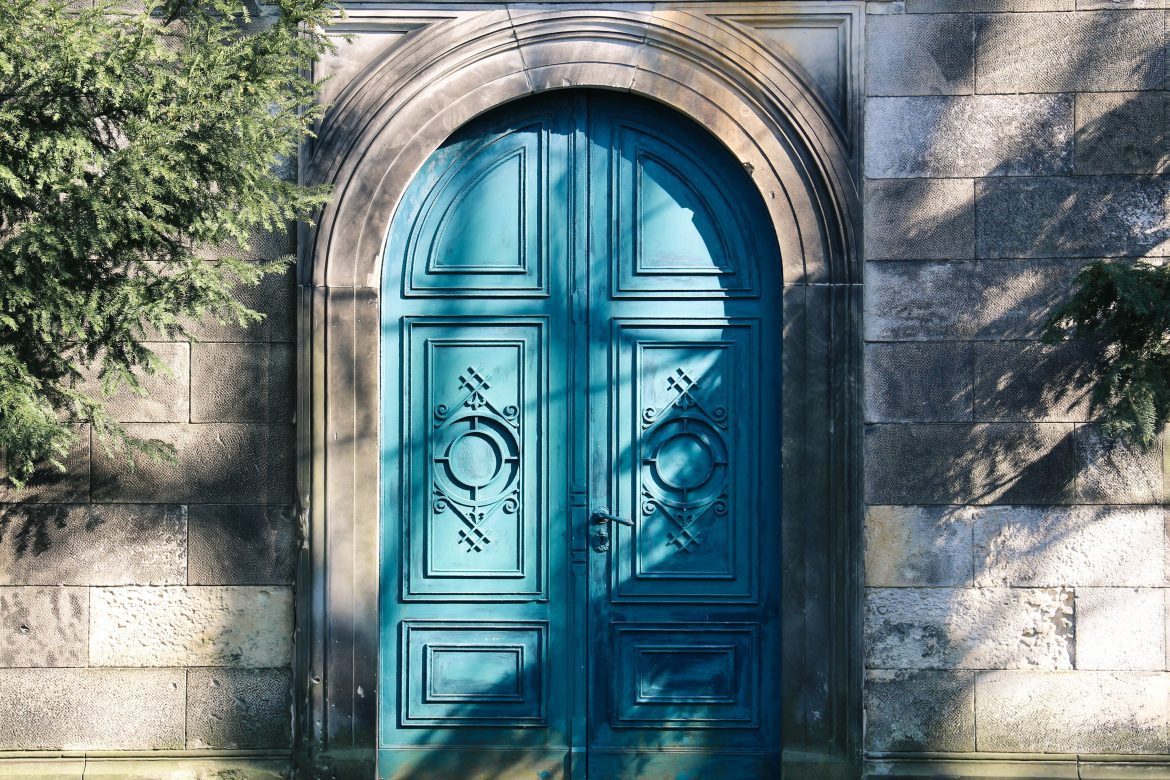Energy bills are constantly on the rise. So, finding ways to make savings is more pressing than ever. In the average UK home, 15% of heat loss occurs through inefficient, draughty doors.
Investing in the best energy-efficient front doors in the UK could help you make those all-important savings. And the benefits don’t stop there. Energy-efficient front doors improve the aesthetics of your home for instant kerb appeal. Additionally, improving your EPC could add up to 14% to its value.
The most popular energy-efficient materials for modern exterior doors are uPVC, timber and composite. We’ve taken a closer look at how you choose the best door material for your home.
What are the energy efficiency standards in the UK?
Before investing in a new front door, you’ll need to know its U-rating and energy efficiency. Since October 2010, front doors must have a U-value of 1.8W/m2K or less. For new builds completed since June 2022, this figure is reduced to 1.4W/m2K.
U-values rate a door’s energy efficiency based on how easily warm and cold air can pass through the material. So the lower the number, the more thermally efficient your front door.
The BFRC has introduced a Rainbow Rating based on the familiar A to G ratings on electrical goods. Look for maximum efficiency A-rated doors to keep your home warm and comfortable.
What to look for in energy-efficient front doors
Because energy-efficient doors significantly impact your home, it’s worth seeking out the best quality you can afford. Other features to look for include:
- Energy rating: Look for doors with a U rating below 1.8W/m2K (1.4W/m2K for new builds) and a BFRC A rating.
- Airtight seals: These will prevent draughts and stop heat leakage.
- Energy-efficient materials: Look for low U-rated doors that prevent cold penetrating.
- Glazed panels: Double or triple-glazed panels can harvest solar heat to warm your interiors and increase natural light.
- Insulation: Look for a door with a thermal break to prevent heat transfer via the door frame.
How to choose a new front door
Aesthetics: Choose a door that suits the style of your property. Composite and uPVC front doors come in a vast array of designs. Wooden doors are often specified in conservation areas for listed properties.
Orientation: Energy-efficient composite doors will keep the entryway toasty if your house faces north. If you benefit from plenty of natural light, look for triple-glazing panels to make the most of it.
Maintenance: uPVC and composite doors require very little maintenance compared to timber.
Sustainability: Look for certified energy-efficient doors. Composite, uPVC and wooden doors can all be recycled.
What’s the best energy-efficient door material?
Choosing the best energy-efficient front doors can be a challenge. Suppose you’re in the market for a new front door. You’ll need to consider the U-rating, technical specifications and your budget before making your final decision.
UPVC doors
UPVC front doors are modern and affordable. They can be finished to suit any style of property in white, block colours or wood grain. Lightweight yet highly secure, uPVC doors are also easy and inexpensive to maintain.
UPVC energy-efficient front doors excel when you need style on a budget.
Sustainability: Although uPVC can’t match timber for durability, your front door will last up to 35 years with the correct maintenance. In addition, this versatile material is easy to recycle and put back into production.
Energy-efficiency: If you’re on a tight budget, uPVC doors boast enviable energy efficiency. Look for multi-chambered doors with excellent insulation that easily meet A rating requirements. All in all, these energy-efficient front doors are a popular choice for homeowners taking steps to reduce their energy consumption.
Timber doors
Wood is the original door material, remaining popular for hundreds of years. Yet it remains a good choice if you crave a cosy and comfortable environment. Additionally, wood has a beautiful natural aesthetic, making it the material of choice for period and listed properties.
Timber doors could be the right choice if natural sustainability is at the top of your shopping list.
Sustainability: This material also scores highly for sustainability. And it has a durability other doors can’t match. However, timber does require plenty of maintenance. In addition, to enjoy all the benefits of a wooden front door, you’ll need to invest in long-lasting hardwood, which can be costly.
Energy-efficiency: Timber’s cellular structure makes it a highly efficient natural insulator. A wooden door traps heat, effectively reducing heat transfer. As a result, your home stays warmer through the winter yet cooler in summer.
Composite doors
When comparing materials for energy-efficient front doors in the UK, composite tends to run out the winner.
Although uPVC and timber are both solid choices, composite doors have the edge, showcasing superior energy efficiency. The fusion of different materials results in an exceptionally solid and durable door. Moreover, their versatility and aesthetic make them a popular choice with homeowners.
Here’s how these energy-efficient front doors excel.
Energy-efficiency: Composite doors have excellent U ratings, typically between 1.4 to 1.8 W/m2K. These values highlight the exceptional performance of these energy-efficient front doors.
Construction: Unlike solid timber or multi-chambered uPVC doors, composite doors use layers of different materials. The mix of materials usually incorporates glass-reinforced plastic, wood, uPVC and insulating foam. The result is a material that reduces energy loss to a bare minimum.
Effective insulation: Composite doors are built around a highly effective insulating foam core. This structure delivers unbeatable thermal resistance. As a result, your interiors remain cool in summer and warm in winter.
Choosing the right energy-efficient front doors
Cost-effective, energy-efficient doors are a fantastic choice for any property. Timber, uPVC and composite front doors will all look good and perform well. However, composite front doors are an outstanding and sophisticated choice.
Homeowners looking for affordability may opt for uPVC. But if you can push your budget, a composite energy-efficient door is a better home improvement investment. Composite doors provide better security, durability and thermal efficiency with fantastic kerb appeal.



